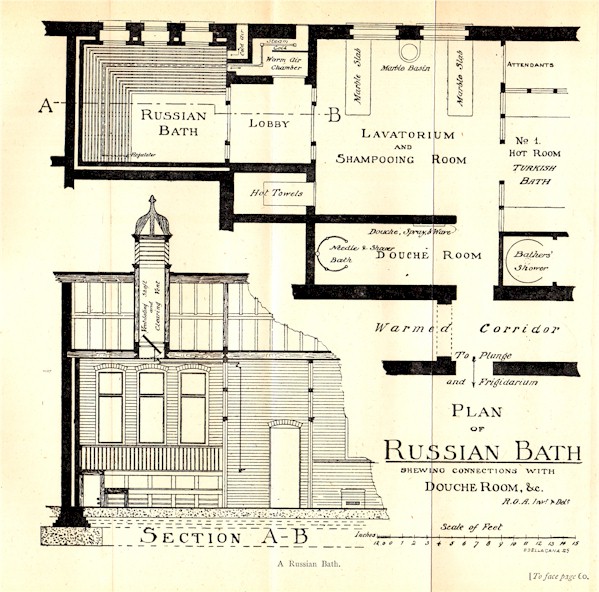Robert Owen Allsop's design for a Russian bath
suitable for a hydropathic establishment

Allsop describes a late nineteenth century Russian bath as being a room heated partly by hot air and partly by steam. It should be separated as far as possible from any other facilities such as a Turkish bath, or a shampooing room, so as to keep the vapour as far away as can be arranged.
In large establishments, such as the Friedrichsbad in Baden-Baden, there are two rooms. Russian baths, like the modern sauna, have benches stepped one above the other, the highest temperatures being obtained on the highest benches.
The temperature in a Russian bath is slight compared with the Turkish bath, varying from 100°F to 112°F. Whereas the bather in a Turkish bath can stay in temperatures from 200°F to nearly 300°F, the bather in a Russian bath would be scalded in a vapour bath of ordinary density if the thermometer registers 120°F.
This page first published 01 January 2023
This page enlarges an image or adds to the information found below:
Sexual activities in the Jermyn Street Hammam. 3: A case study in queer history

Victorian Turkish Baths: their origin, development, and gradual decline



Comments and queries are most welcome and can be sent to:
malcolm@victorianturkishbath.org
The right of Malcolm Shifrin to be identified as the author of this work
has been asserted by him
in accordance with the Copyright, Designs and Patents Act 1988
© Malcolm Shifrin, 1991-2023